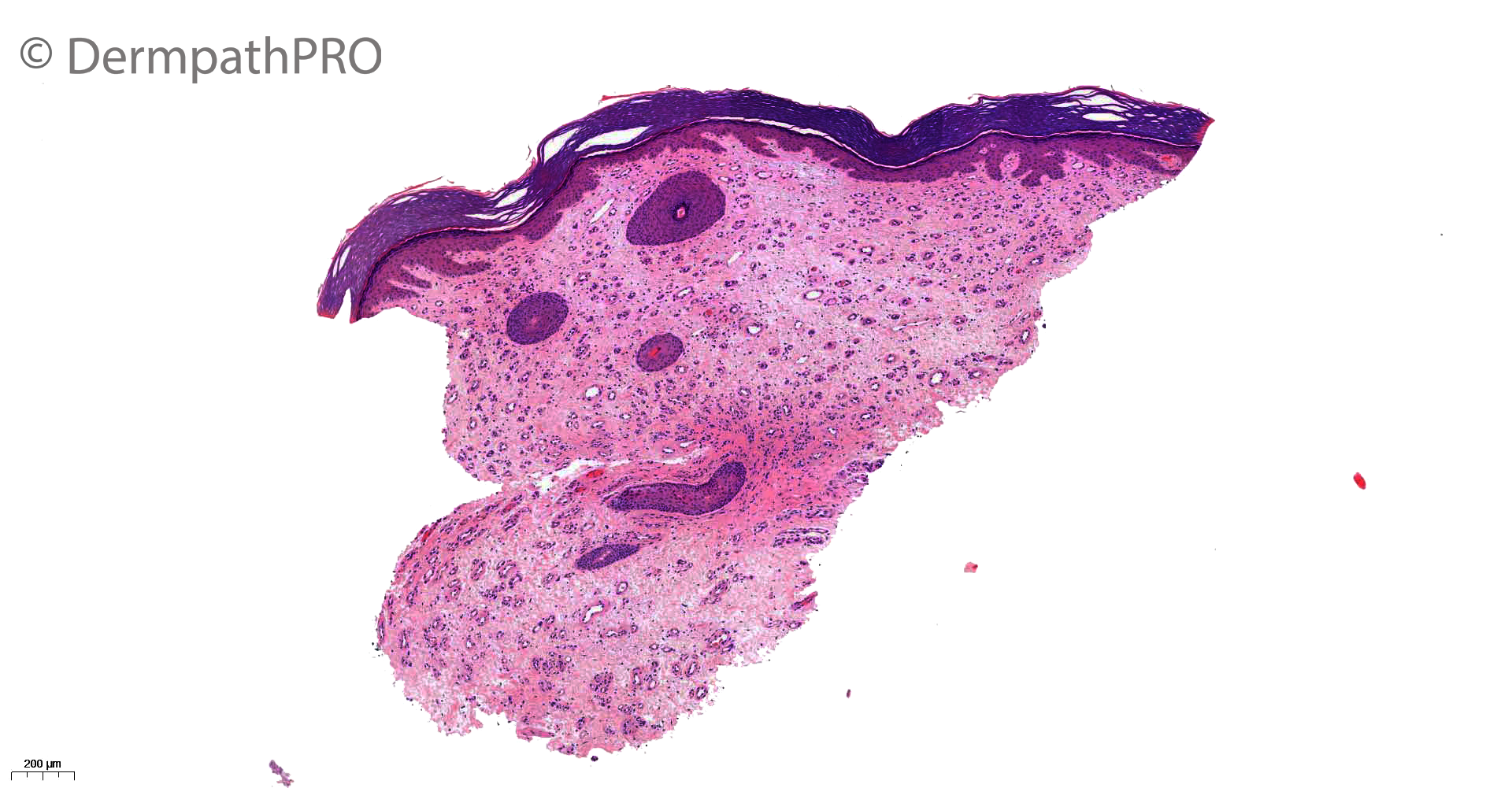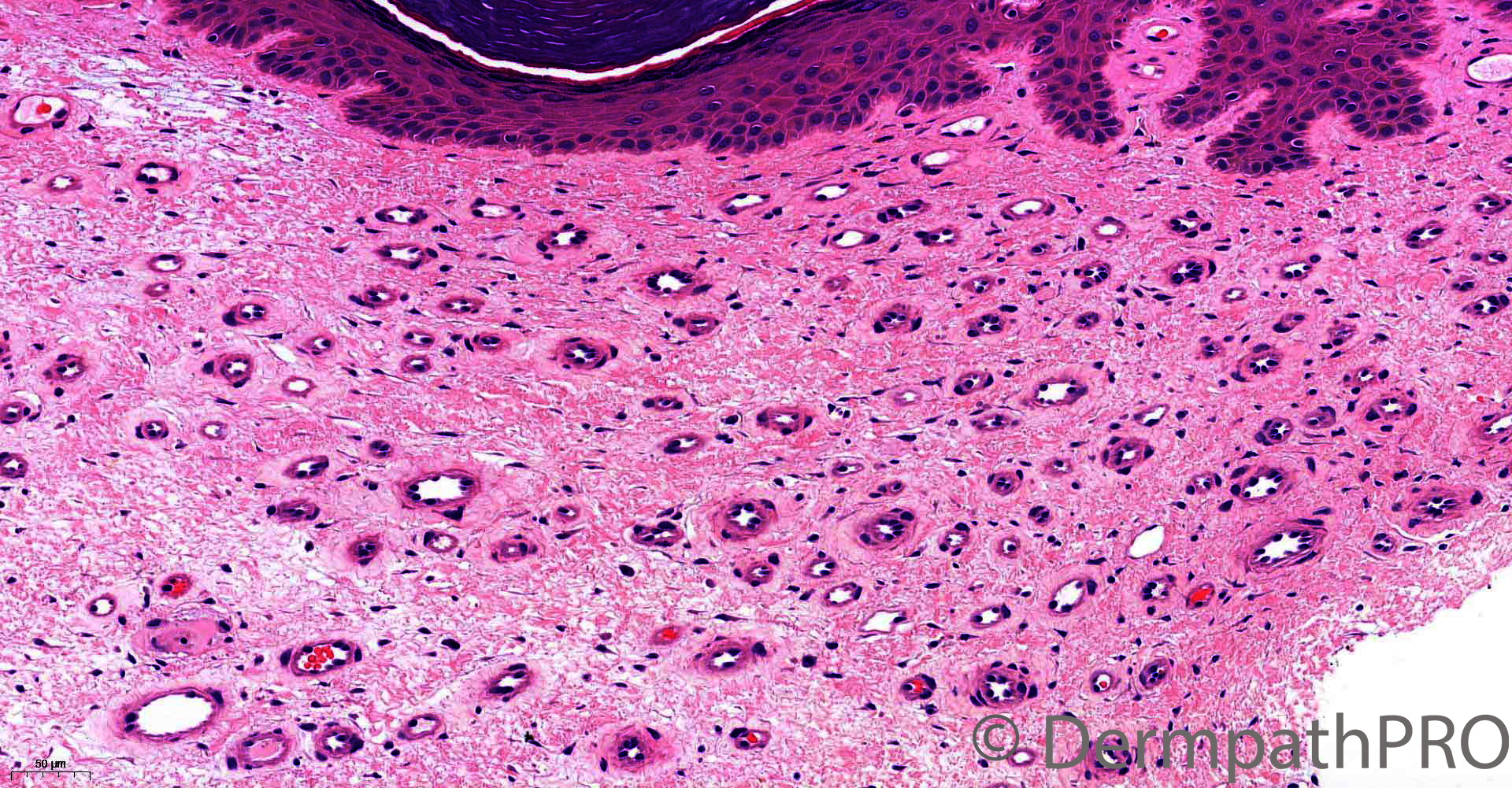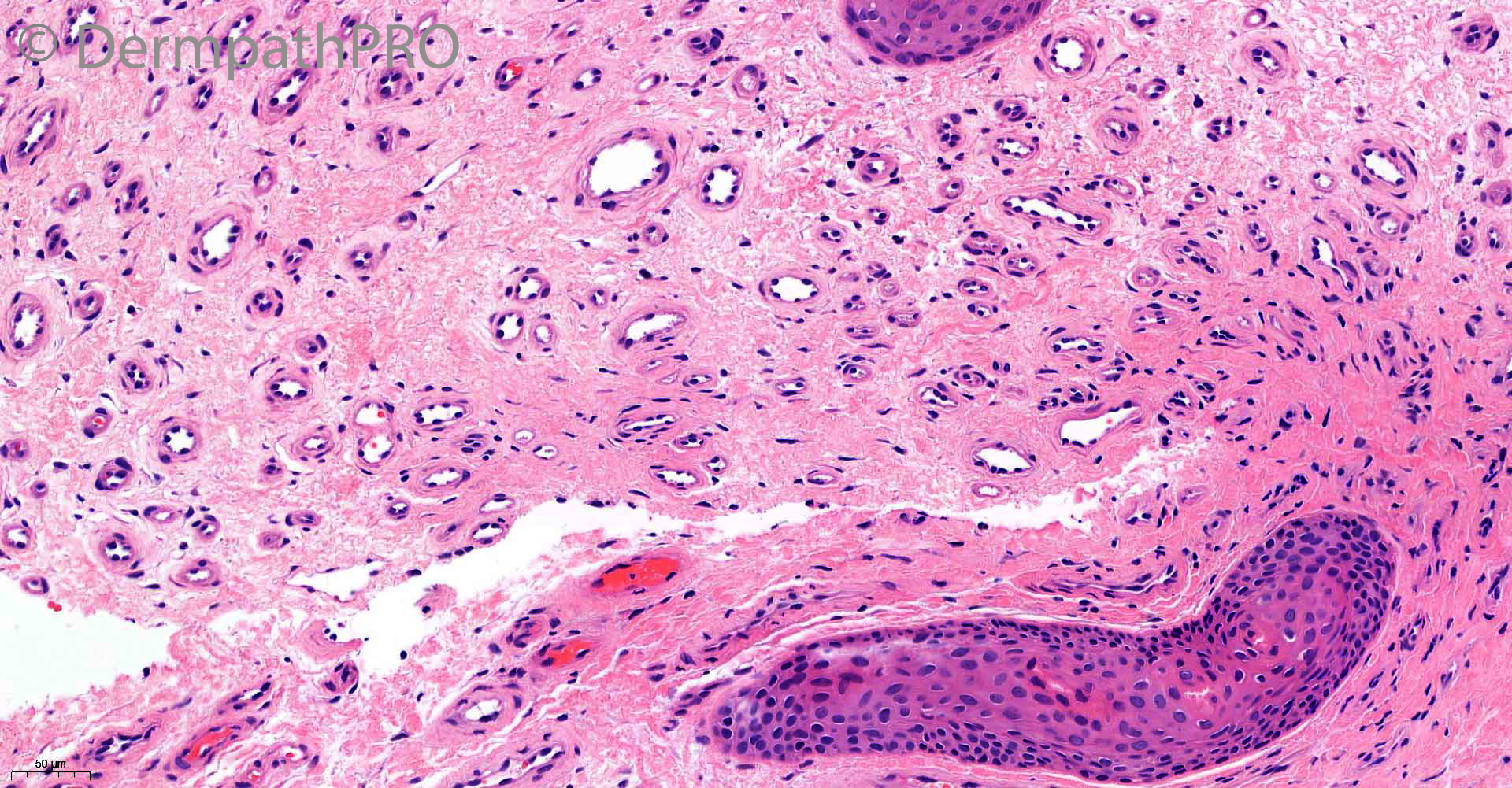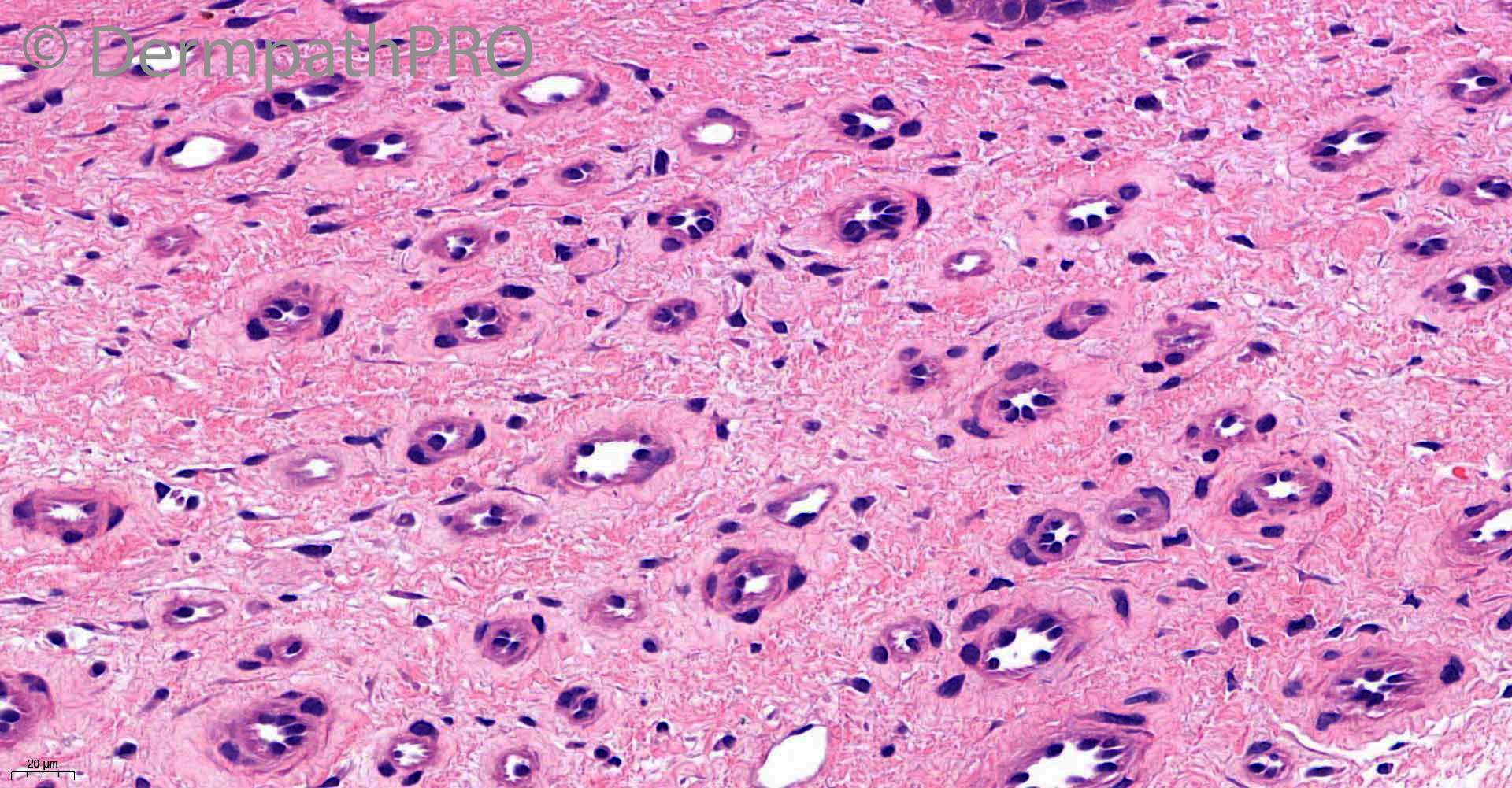Case Number : Case 2846- 03 June 2021 Posted By: Saleem Taibjee
Please read the clinical history and view the images by clicking on them before you proffer your diagnosis.
Submitted Date :
93M, biopsy right lower leg. 4x3cm blue-purple plaque ?acroangiodermatitis pseudo-Kaposi? Kaposi? angiosarcoma? Lymphoma







Join the conversation
You can post now and register later. If you have an account, sign in now to post with your account.